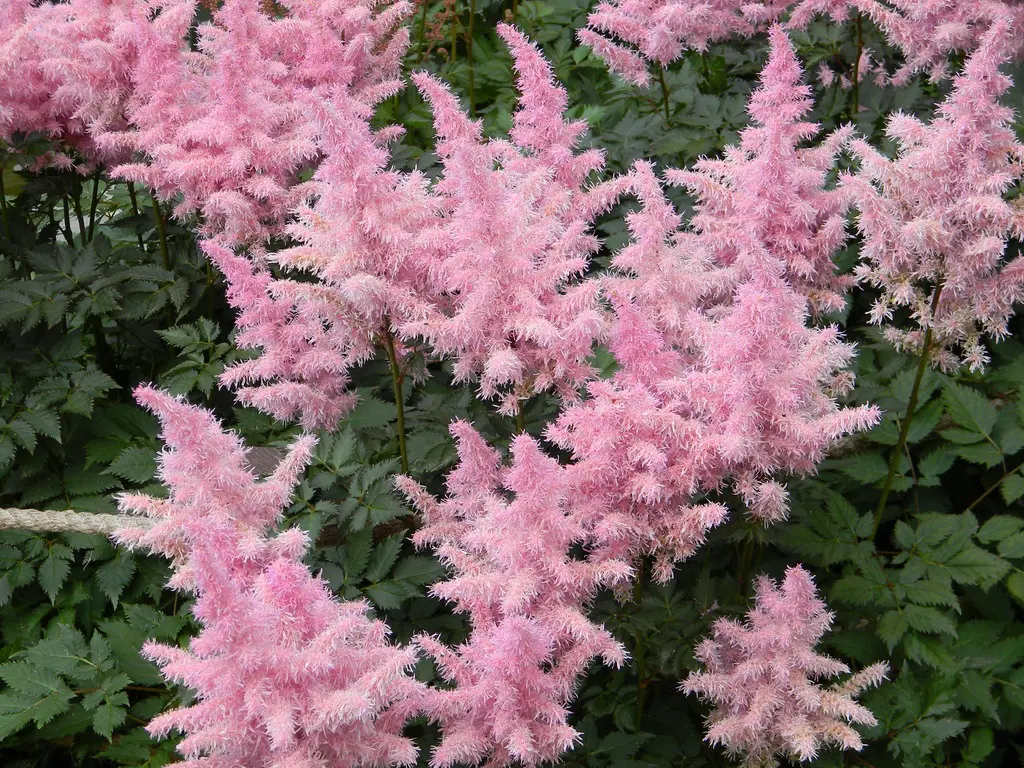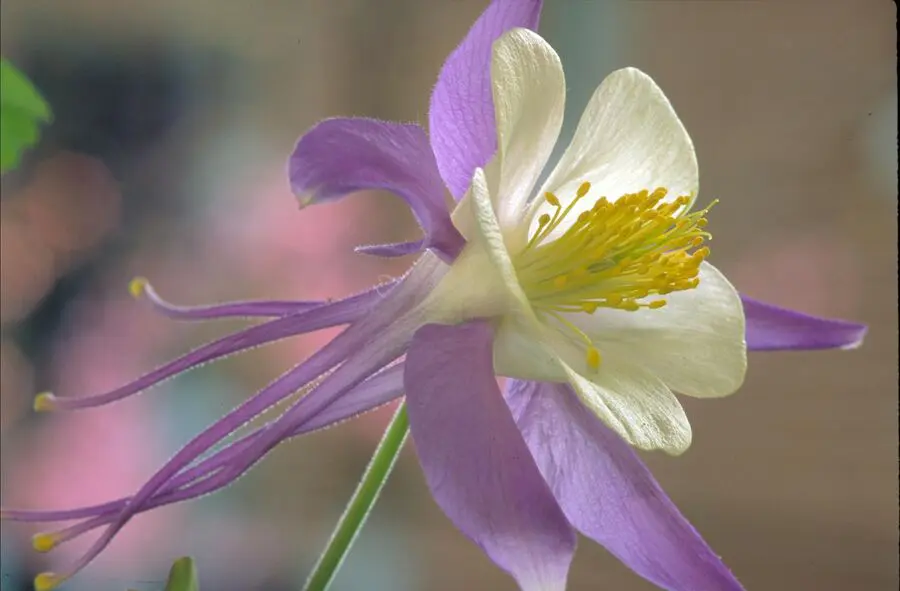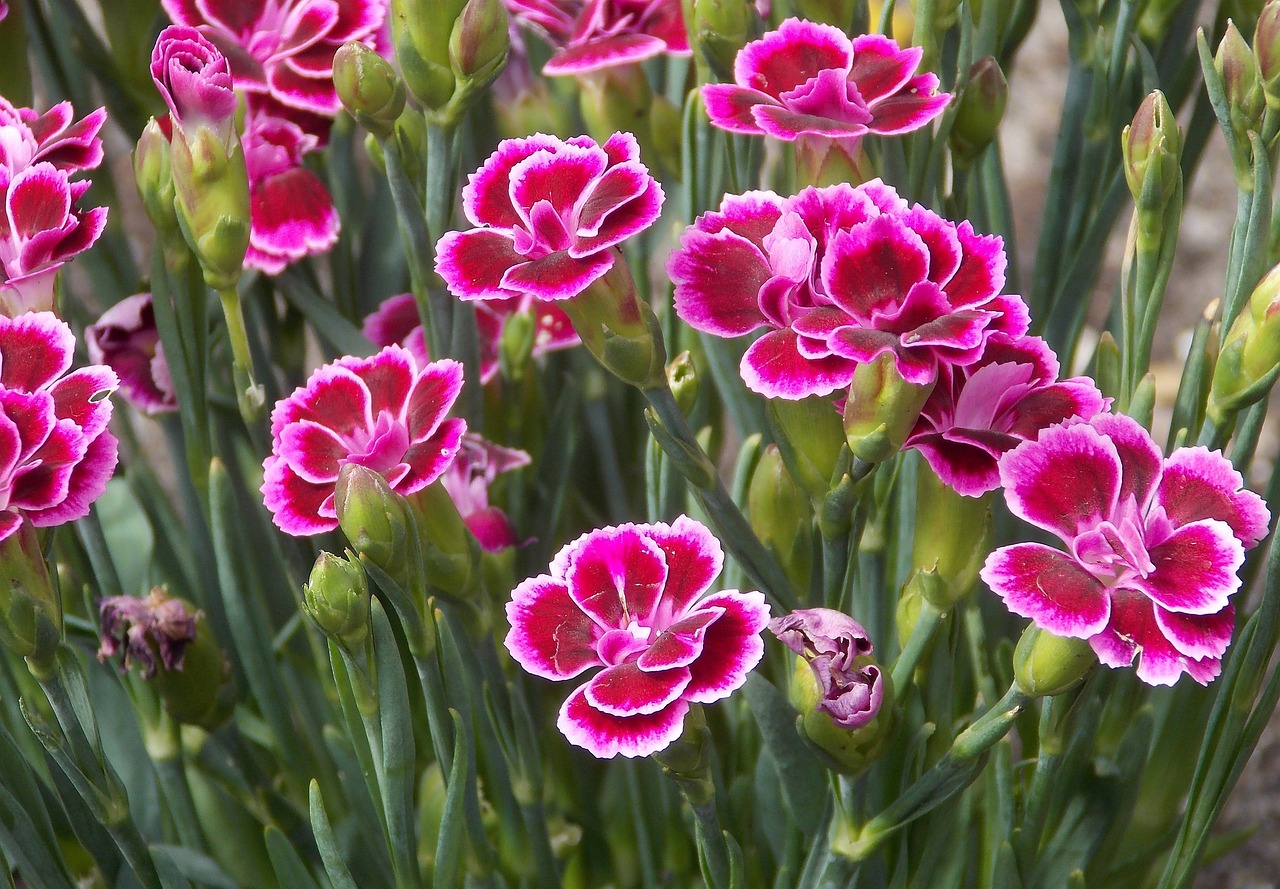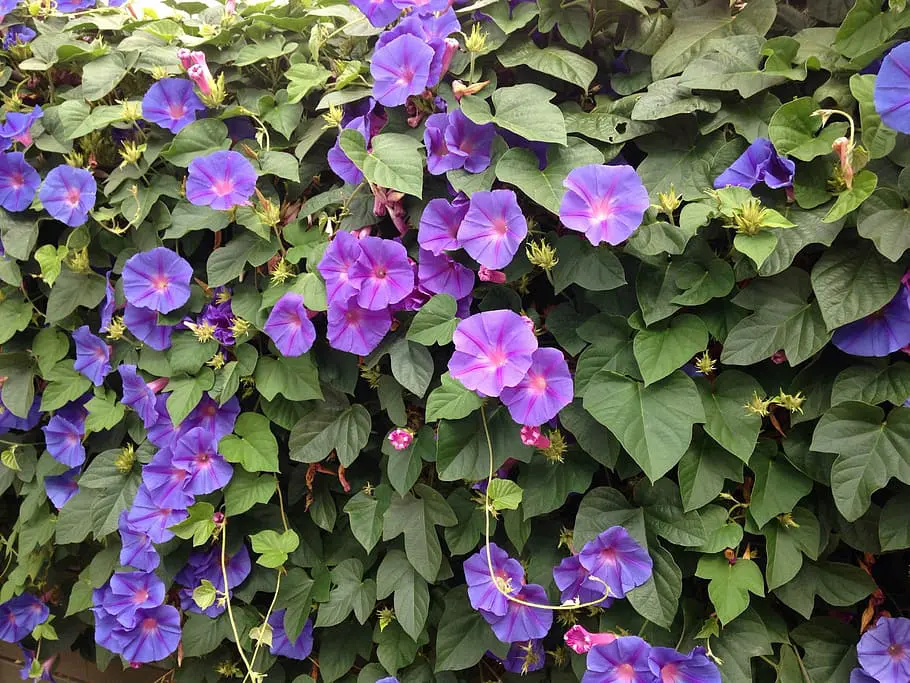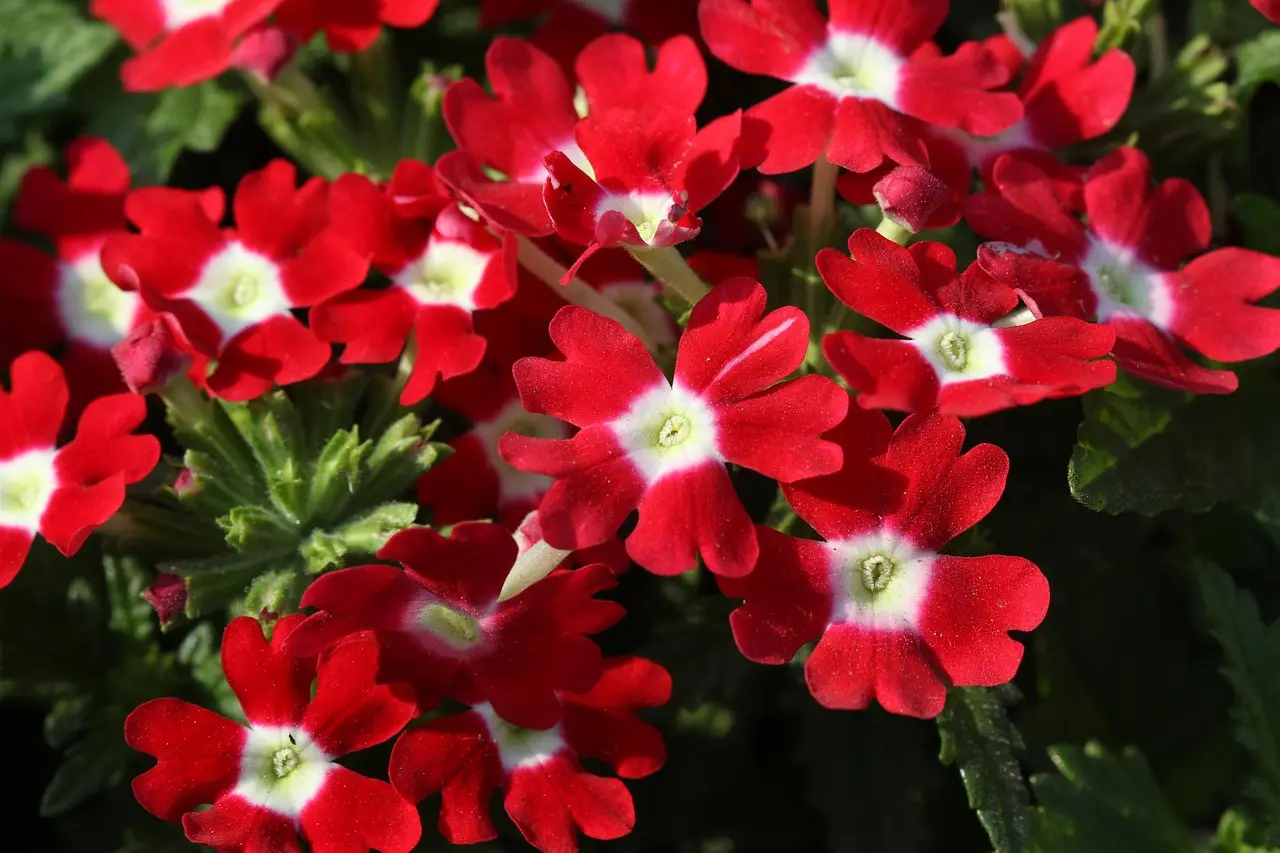This post contains affiliate links. If you buy something from one of our links we may earn a commission. Thanks
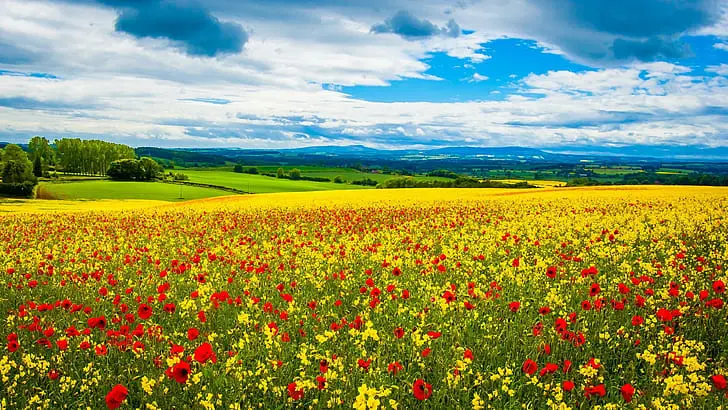
Discover the joy of growing Poppies indoors! Our comprehensive guide makes it easy to cultivate these vibrant flowers in your home, adding a burst of color to your space.
To grow Poppies indoors, start by filling a pot with well-draining soil and sowing poppy seeds on the surface. Provide the pot with plenty of indirect sunlight and keep the soil consistently moist. Once seedlings sprout, thin them to avoid overcrowding. Poppies prefer cooler indoor temperatures, ideally between 55-65°F.
Imagine waking up to the sight of vibrant Poppies blooming right in your living room. Yes, you heard it right!
Growing Poppies indoors is not just possible, but it’s a delightful journey that brings the charm of these colorful Poppy flowers to your indoor spaces.
Whether you’re a seasoned gardener or a beginner, our guide will walk you through the process, making it a breeze to cultivate these beautiful blooms at home.
So, let’s embark on this exciting journey of growing Poppies indoors together!
Growing Poppies Indoors
Welcome to the world of indoor gardening with a twist! Today, we’re diving into the fascinating realm of growing Poppies indoors.
This isn’t your everyday gardening guide; we’re exploring the history and significance of these stunning flowers, discussing the best Poppy species for indoor cultivation, and even addressing some legal aspects.
From sowing seeds in pots to advanced care tips, we’ve got it all covered.
We’ll also tackle some frequently asked questions and provide you with a step-by-step guide to ensure your Poppy growing journey is a success.
So, let’s get started and bring the beauty of Poppies into our homes!
The Allure of Poppies: A Brief Overview
Poppies, with their vibrant petals and distinctive seed pods, have long been a favorite among gardeners.
But did you know that you can bring this outdoor beauty inside? Yes, growing Poppies indoors is not only possible, but it’s also a wonderful way to enjoy these stunning flowers year-round.
Why Grow Poppies Indoors?
The importance of growing Poppies indoors goes beyond their aesthetic appeal.
Indoor gardening, especially with Poppies, can be a therapeutic activity, providing a sense of accomplishment as you watch your seeds sprout and bloom into beautiful flowers.
Plus, having these vibrant blooms indoors can brighten up your space and lift your spirits, especially during the colder months when outdoor gardens lie dormant.
Poppies: A Flower with a Rich History
Poppies have a rich history and significance that spans across cultures and centuries.
Known scientifically as Papaver, Poppies have been symbolic of both sleep and death due to their sedative properties and vibrant red color reminiscent of blood.
However, they also symbolize resurrection, renewal, and the beauty of life.
The most common types, Papaver somniferum (opium Poppy) and Papaver rhoeas (common or corn Poppy), have been used for medicinal, culinary, and ornamental purposes throughout history.
The Legality of Growing Poppies
The legality of growing Poppies can be a complex issue.
While it’s perfectly legal to grow many types of Poppies, including the Papaver rhoeas and California Poppies, the cultivation of Papaver somniferum (opium Poppies) can be a legal gray area in some regions due to its association with opium production.
It’s always a good idea to check local regulations before planting any Poppy seeds.
Origin and historical significance of Poppies
Let’s take a step back in time and delve into the rich history of Poppies.
These flowers aren’t just a pretty sight; they carry a wealth of historical significance.
From ancient civilizations to modern times, Poppies have been a symbol of both peace and conflict, sleep and death, loss and recovery.
Their story is as vibrant and varied as their colors. So, let’s embark on this historical journey and uncover the fascinating origins and significance of Poppies.
A brief history of Poppies
Poppies have a rich and fascinating history that dates back thousands of years.
These vibrant flowers have been found in ancient Egyptian tombs and were used by the Greeks and Romans in their mythology and medicine.
The Poppy, specifically the opium Poppy (Papaver somniferum), was used in the ancient world for its sedative properties.
In the Middle Ages, Poppies were linked with fertility and were often carried by brides.
They were also associated with agriculture as they would bloom in fields after the crops were harvested.
In modern times, the red Poppy (Papaver rhoeas), also known as the Flanders Poppy, has become a symbol of remembrance for soldiers who have died in the war.
This association began after World War I, inspired by the famous war poem In Flanders Fields by Lieutenant Colonel John McCrae.
Today, Poppies are grown for various purposes. Some varieties, like the opium Poppy, are cultivated for medicinal use, as they contain compounds used to produce drugs like morphine and codeine.
Other varieties, like the Oriental Poppy (Papaver orientale) and the California Poppy (Eschscholzia californica), are popular ornamental plants in gardens around the world.
So, from ancient medicine to modern gardens, Poppies have a diverse and significant history that adds to their allure.
Exploring the Poppy Family
Poppies come in a variety of species, each with its unique characteristics.
The opium Poppy (Papaver somniferum) is known for its medicinal properties, while the corn Poppy (Papaver rhoeas), also known as the Flanders Poppy, is famous as a symbol of remembrance.
The Oriental Poppy (Papaver orientale) is loved for its large, vibrant flowers, and the California Poppy (Eschscholzia californica) is admired for its resilience and bright colors.
Each variety has its unique charm, making Poppies a diverse and fascinating group of flowers.
Indoor Stars: Best Varieties for Indoors
When it comes to growing Poppies indoors, some varieties stand out. Iceland Poppies (Papaver nudicaule) is a popular choice due to its tolerance for cooler indoor temperatures.
The California Poppy also does well indoors, thanks to its adaptability. Another good option is the Shirley Poppy, a variant of the common Poppy, known for its wide range of colors.
These varieties are not just beautiful but also well-suited to indoor conditions.
Perennial or Annual? The Life Cycle of Poppies
Are Poppies perennials? Well, it depends on the variety. Some Poppies, like the Oriental Poppy and the California Poppy, are perennials, meaning they live for more than two years, going dormant in the winter and blooming again in the spring.
Other varieties, like the opium Poppy and the corn Poppy, are annual Poppies.
They complete their life cycle in one growing season. They produce seeds that can be sown the next year for a new generation of beautiful early summer flowers.
Understanding the life cycle of your chosen variety is key to successful Poppy cultivation.
Growing Poppies from seed in pots
Ready to bring the beauty of Poppies into your home? Great!
Growing Poppies from seed in pots is a rewarding journey that we’re excited to guide you through.
It’s a process that requires patience, care, and a bit of gardening know-how.
But don’t worry, whether you’re a seasoned green thumb or a gardening newbie, we’ve got you covered.
From buying the right seeds to nurturing them into full bloom, we’ll walk you through each step.
So, let’s roll up our sleeves and get started on this exciting adventure of growing Poppies from seed in pots!
Starting Right: Buying Poppy Seeds
The first step in your Poppy-growing journey is buying the seeds.
You’ll find a variety of Poppy seeds available online or at your local garden center.
When choosing seeds, consider the type of Poppy you want to grow. Do you prefer the vibrant colors of the Oriental Poppy or the resilience of the California Poppy?
Each variety has its unique characteristics, so choose one that suits your preference and indoor conditions.
Also, ensure you buy from a reputable source to get high-quality, viable seeds.
The Germination Game: Germinating Poppy Seeds in Paper Towel
Germinating Poppy seeds in a paper towel is the best method and is very popular among gardeners.
I think it is the best way to sprout seeds. It allows you to start the germination process before planting, giving your seeds a head start.
Here’s how to do it:
• Dampen a paper towel and sow Poppy seeds on it.
• Fold the paper towel to cover the seeds.
• Place the folded paper towel in a plastic bag and seal it.
• Keep the bag in a warm place.
• Check the paper towel regularly to ensure it stays moist, and look out for sprouting seeds.
• Once they sprout, they’re ready to be planted in pots.
Patience is a Virtue: How Long Do Poppies Take to Grow from Seed?
Growing Poppies from seed is a test of patience, but the result is worth the wait.
After sowing, Poppy seeds typically take about 10-30 days to germinate.
Once the seedlings appear, they’ll need another 4-6 weeks to grow large enough to bloom.
So, from sowing to blooming, you’re looking at approximately 2-3 months.
Remember, each variety of Poppy may have a slightly different growth timeline, and factors like temperature, light, and care can also influence how quickly your Poppies grow.
An Alternative Route: Buying Poppy Bedding Plants
If starting from seeds sounds like a bit too much work, or if you’re eager to see your Poppies bloom sooner, there’s an alternative, buying Poppy bedding plants.
These are young plants that have been started by a nursery and are ready to be transplanted into your pots.
They can be a great option if you want to skip the germination process and get a head start on growing your Poppies.
You can find Poppy bedding plants at garden centers or online nurseries.
Just remember to handle them with care when planting, as young plants can be delicate.
Basics of Growing Poppies Indoors
Now that we’ve got our Poppy seeds or bedding plants ready, it’s time to dive into the basics of growing Poppies indoors.
Don’t worry, it’s not as daunting as it might sound! With the right conditions and a bit of care, you can cultivate a thriving Poppy plant right in your living room.
From understanding the importance of soil, light, and temperature to setting up the perfect indoor environment for your Poppies, we’re here to guide you through it all.
So, let’s get started and turn your indoor space into a Poppy paradise!
Creating the Perfect Environment: Ideal Conditions for Growing Poppies Indoors
Growing Poppies indoors requires creating an environment that mimics their natural outdoor habitat.
Poppies love full sun, so place them in a spot that gets plenty of direct sunlight for about 6-8 hours a day.
They also prefer cooler temperatures, ideally between 55-75°F (13-24°C).
As for humidity, Poppies aren’t too fussy. Average home humidity levels should be fine but avoid overly humid conditions as this can lead to fungal problems.
The Holy Trinity of Gardening: The Importance of Soil, Light, and Temperature
When it comes to growing Poppies, or any plant for that matter, three factors play a crucial role: soil, light, and temperature.
Poppies prefer well-drained soil. A mix of coco coir and perlite can work well for indoor pots.
Light is essential for photosynthesis, and Poppies need plenty of direct sunlight to bloom.
Temperature is also important. Poppies prefer cooler temperatures, so try to maintain a consistent indoor temperature within their preferred range.
Let There Be Light: Growing Poppies Indoors Under Lights
If you don’t have a spot with sufficient natural light, don’t worry! You can still grow Poppies indoors under lights.
Grow lights can be a great solution. They can provide the full spectrum of light that Poppies need to grow and bloom.
When using grow lights, ensure they’re positioned close enough to the plants to provide adequate light, but not so close as to burn them.
Also, remember to turn the lights off for about 8 hours a day to mimic the natural day-night cycle.
With the right setup, your Poppies can thrive under indoor lights.
Step-by-Step Guide to Planting Poppies Indoors
Ready to get your hands a little dirty? Fantastic! It’s time to dive into the practical part of our guide, planting Poppies indoors.
Don’t worry if you’ve never done this before. We’re here to guide you through each step, from preparing the soil to caring for the sprouts.
It’s a process that requires some patience and care, but the reward of seeing your Poppies bloom will be well worth it.
So, let’s roll up our sleeves and get started on this exciting part of our indoor gardening journey!
Soil Prep: Preparing the Soil with Coco Coir and Perlite
The first step in planting Poppies indoors is preparing the soil.
Poppies prefer well-drained soil, and a mix of coco coir and perlite can provide just that.
Coco coir, made from the husk of coconuts, is a sustainable and pH-neutral medium that retains water well.
Perlite, on the other hand, is a volcanic glass that has been heated into little white balls.
It’s great for improving aeration and drainage. A mix of these two can create an ideal environment for your Poppy seeds to sprout and grow.
A mix of 75% coco coir and 25% perlite should work really well.
Choosing the Right Home: Pot Size
The size of the pot you choose can greatly influence the growth of your Poppies.
For a single plant, a pot with a 10-12 inch diameter should suffice.
If you’re planning to grow multiple plants in one pot, go for a larger one, about 16 inches in diameter or more.
Remember, the pot should have drainage holes at the bottom to prevent waterlogging.
Sowing the Future: Planting the Seeds
Now comes the exciting part, planting the seeds!
Sprinkle your Poppy seeds over the surface of the soil. Don’t bury them deep as they need light to germinate.
A thin layer of fine sand or coco coir over the seeds is enough. After sowing, water the soil gently to moisten it without disturbing the seeds.
Nurturing Life: Caring for the Sprouts
Once your seeds sprout, the real nurturing begins. Keep the soil consistently moist but not waterlogged.
Provide your sprouts with plenty of light, about 6-8 hours of direct sunlight a day.
If you’re growing them under lights, adjust the lights to stay close to the sprouts without burning them.
With proper care, you’ll soon see your sprouts grow into beautiful Poppy plants.
Caring for Indoor Poppies
Now that we’ve planted our Poppies, it’s time to ensure they grow and bloom beautifully.
Caring for indoor Poppies involves more than just watering them regularly.
It’s about understanding their needs and meeting them consistently. From setting a watering schedule to understanding their fertilizing needs and maintenance, we’re here to guide you through it all.
So, let’s dive in and learn how to keep our indoor Poppies happy and healthy!
Quenching Thirst: Watering Schedule
Watering is crucial to the health of your indoor Poppies, but it’s not just about quantity, it’s also about timing.
Poppies prefer their soil to be consistently moist, but not waterlogged.
A good rule of thumb is to water when the top inch of the soil feels dry to the touch.
Be careful not to overwater, as this can lead to root rot. Remember, it’s better to water thoroughly but less frequently, allowing the water to reach the deeper roots.
Feeding Time: Fertilizing Needs
While Poppies aren’t heavy feeders, they do appreciate a bit of nutrition to support their growth and blooming.
A slow-release fertilizer applied at the beginning of the growing season can provide the nutrients your Poppies need.
Alternatively, a balanced liquid fertilizer can be used every 2-4 weeks. Always follow the package instructions to avoid over-fertilizing, which can harm your plants.
TLC for Poppies: Pruning and Maintenance
Pruning and maintenance are key to keeping your indoor Poppies healthy and attractive.
Regularly remove dead or yellowing leaves to keep the plant looking its best and to prevent the spread of diseases.
After your Poppy has finished blooming, you can cut back the foliage to the base of the plant.
This encourages new growth and helps keep the plant compact. With regular care and attention, your indoor Poppies can thrive and bloom beautifully.
Advanced Tips for Growing Poppies Indoors
You’ve mastered the basics of growing Poppies indoors, and now you’re ready to take your gardening skills to the next level.
Welcome to the world of advanced Poppy care! This section is all about those extra steps you can take to ensure your Poppies not only grow but truly thrive.
From enhancing blooming to troubleshooting common problems, we’ve got some great tips and tricks up our sleeves.
So, let’s dive in and learn how to become a pro at growing Poppies indoors!
Boosting Blooms: Enhancing Blooming
To enhance blooming in your indoor Poppies, make sure they’re getting enough light.
Poppies need about 6-8 hours of direct sunlight each day to bloom well. If natural light is insufficient, consider using a grow light.
Additionally, a balanced fertilizer can provide the nutrients your Poppies need to produce vibrant blooms.
Remember to follow the package instructions to avoid over-fertilizing.
Promoting Vigor: Encouraging Healthy Growth
Encouraging healthy growth in your Poppies involves providing the right conditions and care.
Ensure your Poppies are getting enough light, the soil is well-drained, and the temperature is within their preferred range.
Regular watering and feeding can also promote healthy growth. But remember, consistency is key.
Poppies, like all plants, thrive on routine.
Problem-Solving: Troubleshooting Common Problems
Poppies are generally easy to grow, but they can sometimes encounter problems.
Yellowing leaves could indicate overwatering or poor drainage.
If your Poppies aren’t blooming, they might not be getting enough light.
Leggy growth could be a sign of too little light or too much nitrogen in the fertilizer. Identifying the problem is the first step to solving it.
Guarding Against Invaders: Dealing with Pests and Diseases
Poppies can sometimes attract pests like aphids and spider mites. If you notice small bugs on your plants or a sticky residue on the leaves, you might have a pest problem.
Insecticidal soap or neem oil can be an effective treatment.
As for diseases, Poppies can be susceptible to fungal diseases, especially in conditions of high humidity or poor air circulation.
If you notice spots or a powdery substance on the leaves, consider using a fungicide and improving air circulation around your plants.
Bloom or Bust: Addressing Growth and Blooming Issues
If your Poppies are growing but not blooming, they might not be getting enough light or nutrients.
Make sure they’re getting plenty of direct sunlight and consider using a balanced fertilizer.
If your Poppies are not growing well, check the watering, light, and temperature conditions.
Remember, Poppies prefer well-drained soil, plenty of light, and cooler temperatures.
Adjusting these conditions can often help resolve growth and blooming issues.
How and when to propagate Poppies
Ready to multiply the beauty of your indoor Poppy garden? Let’s talk about propagation!
Propagating Poppies can be a fun and rewarding process, allowing you to create new plants from the ones you already have.
But knowing how and when to do it is crucial for success. In this section, we’ll guide you through the process of propagating Poppies, sharing tips for successful transplanting along the way.
So, let’s dive in and learn how to spread the Poppy love!
Propagating Poppies by division
While most Poppy varieties are typically propagated from seeds, some perennial Poppies can also be propagated by division.
This involves splitting an established plant into several smaller pieces, each with its own root system, and then replanting these divisions.
Here’s a step-by-step guide:
• Choose the right time: For Plume Poppies and similar varieties, the best time to divide is in the late spring, shortly after the foliage emerges. This gives the divisions a full growing season to establish themselves.
• Prepare your tools: You’ll need a sharp, clean knife or garden spade for this process. It’s important to clean your tools before starting to prevent the spread of diseases.
• Dig up the plant: Carefully dig around the Poppy plant, taking care not to damage the roots. Lift the entire plant out of the ground.
• Divide the plant: Look for natural divisions in the root system. Using your hands or a knife, gently separate the plant into smaller sections. Each section should have both roots and shoots.
• Replant the divisions: Plant each division in a pot filled with well-draining soil. The planting depth should be the same as the original plant. Water the divisions well after planting.
• Care for the divisions: Keep the newly planted divisions in a sheltered location with indirect light. Maintain consistent watering to help them establish.
Remember, always research the specific propagation methods for your chosen variety to ensure the best results.
Repotting Poppies
Repotting Poppies can give them more room to grow and ensure they have fresh, nutrient-rich soil.
Here’s a step-by-step guide on how to do it:
• Choose the right time: The best time to repot Poppies is in the early spring, just as they’re starting to grow.
• Prepare your materials: You’ll need a new pot that’s larger than the current one, fresh potting soil, and a trowel or your hands. The new pot should have good drainage to prevent waterlogging.
• Remove the Poppy from its current pot: Carefully tip the pot sideways and gently ease out the Poppy. Try to keep the root ball intact to minimize stress to the plant.
• Prepare the new pot: Fill the new pot about one-third full with fresh potting soil.
• Plant the Poppy: Place the Poppy in the new pot. The top of the root ball should be at the same level as it was in the old pot. Fill in around the roots with more potting soil, pressing gently to remove air pockets.
• Water the Poppy: After repotting, water the Poppy thoroughly. This helps settle the soil around the roots.
• Care for the repotted Poppy: Keep the repotted Poppy in a sheltered location for a few days to help it adjust. Then, return it to its usual spot and care for it as normal.
Remember, Poppies don’t like having their roots disturbed, so only repot when necessary.
If your Poppy is growing well and isn’t root-bound, it may be best to leave it in its current pot.
Growing Poppies Indoors FAQs
We’ve covered a lot of ground on our journey of growing Poppies indoors, and you might still have a few questions.
That’s great! Curiosity is the gardener’s best friend. In this section, we’ve gathered some of the most frequently asked questions about growing Poppies indoors.
From legality concerns to pot suitability, we’re here to clear up any lingering doubts.
So, let’s dive into these FAQs and quench that thirst for knowledge!
Q: Is it possible to grow Poppies indoors?
A: Absolutely! Poppies can be grown indoors successfully with the right care and conditions.
They need plenty of light, well-drained soil, and cooler temperatures, which can all be provided indoors.
Q: Are people allowed to grow Poppies?
A: Yes, it’s generally legal to grow Poppies.
However, it’s important to note that some varieties, like the Papaver somniferum (opium Poppy), can be subject to restrictions in certain areas due to their potential use in producing narcotics.
Always check local regulations if you’re unsure.
Q: Do Poppies grow well in pots?
A: Poppies can grow well in pots, making them a great choice for indoor gardening.
Just ensure the pot has good drainage and is large enough for the Poppy’s root system.
Q: Can California Poppies be grown indoors?
A: California Poppies, like other Poppy varieties, can be grown indoors.
They’re known for their resilience and vibrant colors, making them a popular choice for indoor gardens.
Just remember, they need plenty of light and well-drained soil to thrive.
Growing Poppies Indoors Final Thoughts
We’ve journeyed together through the fascinating world of growing Poppies indoors, and it’s been a pleasure sharing this knowledge with you.
As we wrap up, it’s time to reflect on what we’ve learned and look forward to the joy of seeing our Poppies bloom.
Remember, gardening is a journey, not a destination.
So, whether you’re a seasoned gardener or just starting out, embrace the process, learn from your experiences, and most importantly, enjoy the beauty that your indoor Poppy garden brings.
Let’s conclude our guide and get ready to embark on this exciting gardening adventure!
Looking Back: Recap of the Article
We’ve covered a lot in this comprehensive guide to growing Poppies indoors.
We started with an introduction to the enchanting world of Poppies, discussing their history and significance.
We then delved into the specifics of different Poppy varieties and their unique characteristics.
We learned about the process of growing Poppies from seeds and the ideal conditions for their growth.
We also discussed the step-by-step process of planting Poppies indoors and how to care for them once they’ve sprouted.
We shared advanced tips for enhancing blooming, encouraging healthy growth, and troubleshooting common problems.
We also discussed the process of propagating Poppies and answered some frequently asked questions.
Green Thumbs Up: Start Your Indoor Poppy Garden
Now that you’re equipped with all this knowledge, it’s your turn to bring the beauty of Poppies into your home.
Remember, gardening is a journey filled with learning and growth, much like the plants you’ll be nurturing.
Don’t be afraid to get your hands dirty and make a few mistakes along the way.
Each step, each challenge, is a chance to learn and grow. So, go ahead, and start your indoor Poppy garden.
We can’t wait to hear about your gardening adventures and the joy that your blooming Poppies bring to your home!
Read more: Benefits Of Keeping Indoor Plants












